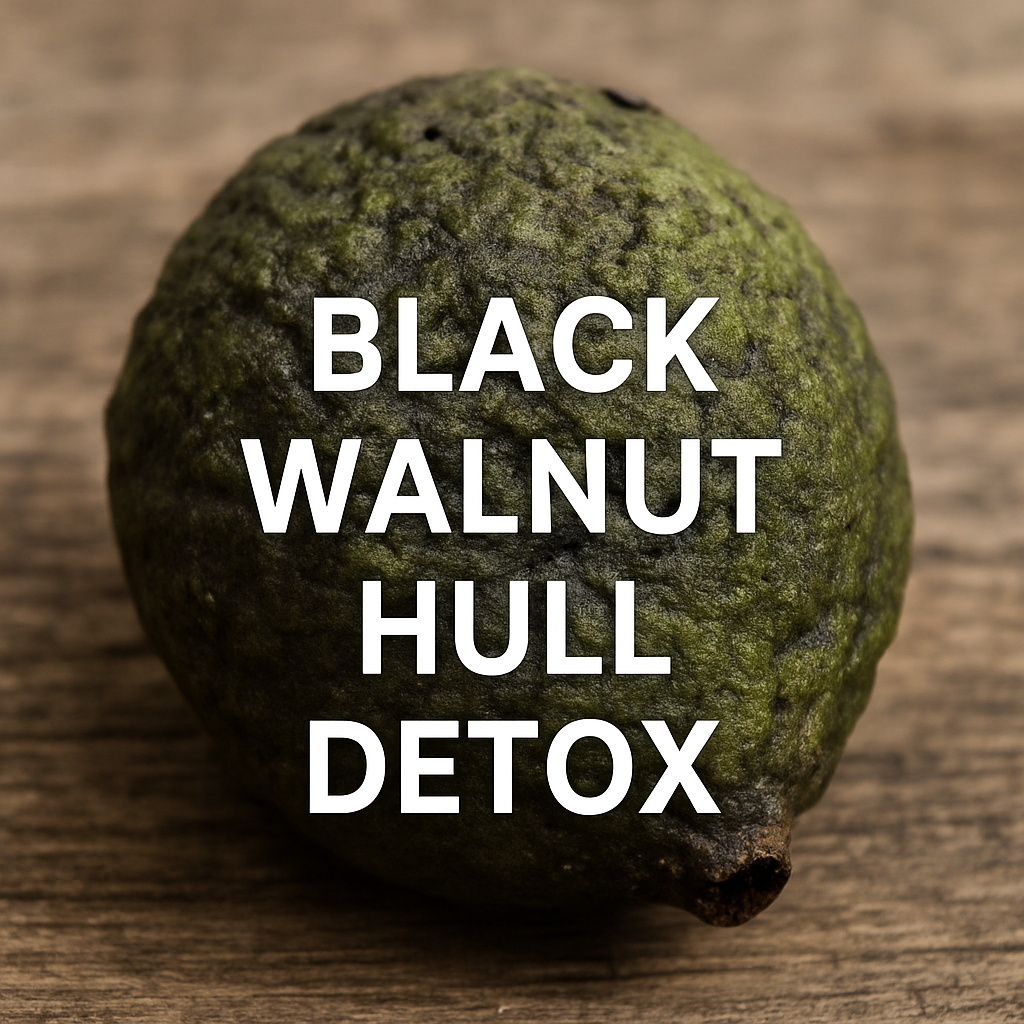
How to Use Black Walnut Hull for Parasite Detox: A Complete Guide
```html
Looking for a natural way to support parasite elimination? Learning how to use black walnut hull for parasites can empower you with an herbal strategy rooted in traditional use. In this guide, you’ll discover what black walnut hulls are, how to prepare them, and the best practices for a safe, effective cleanse. Ready to dive into the world of Juglans nigra and harness its cleansing power? If you’ve ever wondered what are black walnut hulls, picture the green outer layer that encases the nut inside its shell. These hulls contain juglone, tannins, and other phytochemicals valued for their antimicrobial and antiparasitic effects. Traditionally, practitioners harvested the hulls at peak ripeness—before the nuts fall—to ensure maximum potency. For further insight on natural cleansing, consider the dandelion root detox as an effective herbal remedy. Understanding what is a black walnut hull is key to using the herb correctly. The hulls are not the shell or the nut itself, but the leathery exterior that provides the highest concentration of active compounds. One common question is are black walnut hulls acidic? While the hulls contain tannins that impart astringency, their pH is close to neutral when prepared as a tincture or decoction. If you have a sensitive stomach, start with a diluted extract or capsule to minimize any digestive irritation. For those looking to balance their diet alongside these hulls, exploring coffee detox may also be beneficial. For those worried about acidity, pairing black walnut hulls with soothing botanicals—like marshmallow root or slippery elm—can help buffer the digestive tract during your parasite cleanse. Before you can use the hulls, you need to know how to hull black walnuts. Start by wearing gloves—fresh green hulls can stain and irritate skin. Use a mallet or rolling pin to crack the outer layer, then peel away the hull to reveal the shell beneath. For those interested in home detox techniques, consider apple pectin detox as an addition to your regimen. If you’re processing large batches, consider using a mechanical nut cracker and rinse the hulls in water to remove debris. Spread them out on a tray to dry in a cool, dark place before storing in an airtight container. Beyond its antiparasitic properties, it’s useful to explore what is black walnut hull good for. The hull’s juglone content supports healthy gut flora, while tannins may help tone the intestines and reduce bloating. Some studies suggest antioxidant and anti-inflammatory benefits as well. Additionally, B12 detox can aid in maintaining overall health. Whether you’re following a targeted cleanse or simply boosting your herbal toolkit, black walnut hull can be a versatile ally for overall digestive wellness. Once you have dried hulls, it’s time to learn how to use black walnut hull for parasites in tincture form. Chop the dried hulls into small pieces and place them in a glass jar. Cover with vodka or grain alcohol (at least 80 proof) to create a 1:5 herb-to-alcohol ratio. Seal the jar and store it in a cool, dark spot. Shake daily for 2–4 weeks, then strain through cheesecloth. Your homemade black walnut hull tincture is now ready—store in amber bottles away from light. Knowing how to use black walnut hull for parasites safely is essential. Start with 10–20 drops of tincture in water, once or twice daily, and gradually increase to 40–60 drops, depending on your tolerance. Always consult a qualified herbalist or healthcare practitioner for personalized guidance. Consider also reviewing how B12 supports detox for additional insights on herbal cleansing. For a gentler approach, capsules (500 mg of hull powder) can be taken 1–2 times per day. Monitor your body’s response and adjust as needed. To enhance effectiveness, practitioners often pair black walnut hulls with wormwood, clove, or garlic. This multi-herb strategy addresses different parasite life stages and minimizes resistance. Check out our detailed protocols in the Herbal Detox Guide for step-by-step instructions. Rotating herbs weekly—starting with black walnut hull tincture, then switching to wormwood tea—can support a comprehensive cleanse without overloading your system. Want to dive deeper into botanical cleanses? Read our in-depth post on the 7 Powerful Herbs to Detox Parasites for additional insights and protocols. Although generally safe, overuse of black walnut hulls can lead to nausea, headaches, or digestive upset. If you experience mild discomfort, reduce your dose or take breaks between cycles. Those with nut allergies should avoid raw hull preparations and opt for standardized extracts. Pregnant or nursing women and individuals with liver disorders should consult their healthcare provider before beginning any parasite cleanse. Mastering how to use black walnut hull for parasites can provide a powerful, natural tool for intestinal health. From understanding what are black walnut hulls to learning how to hull black walnuts, you now have a clear roadmap to prepare and dose this potent herb. Ready to explore more herbal strategies? Visit our Herbal Detox Guide and dive into our Detox Tips blog for expanded protocols and product recommendations. Your journey to a cleaner, healthier you starts here!What Are Black Walnut Hulls?
Are Black Walnut Hulls Acidic?
How to Hull Black Walnuts at Home
What Is Black Walnut Hull Good For?
Preparing Your Black Walnut Hull Parasite Tincture
Dosage Guidelines for Parasite Cleansing
Combining Black Walnut Hulls with Other Herbs
Explore More on Herbal Parasite Detox
Potential Side Effects & Precautions
Conclusion: Embrace Herbal Support
Content Disclaimer
This blog post is intended for educational and informational purposes only. Nothing in this content should be interpreted as encouragement, advice, or instruction to use our products in any fraudulent or illegal manner.
All products sold are for novelty, fetish, research, or calibration use only. It is the customer’s responsibility to comply with all local, state, and federal laws.
